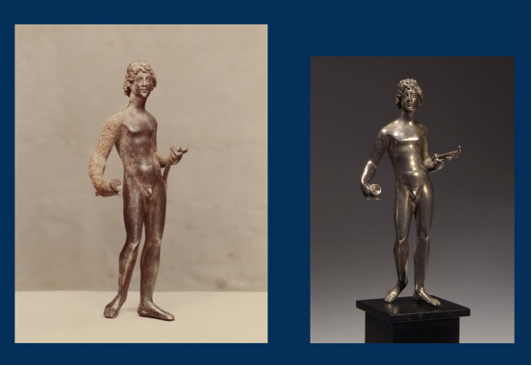 |
| L: Bronze returned to Turkey. R: Bronze in Royal-Athena Galleries |
Among the objects returned to Turkey was a small bronze identified as Attis. This appears to be the bronze acquired from Galerie Nefer in July 1984 and then sold through Royal-Athena Galleries (Art of the Ancient World 4 [1985] no. 144) to the J.H. collection, Dearborn, Michigan. It was then placed on loan with Ohio State University; Picker Art Gallery, Colgate University; and Fitchburg Art Museum. It was then back on sale at the Royal-Athena Galleries (Art of the Ancient World 29 [2018] no. 18).
Note that the 2018 catalogue entry mentions the oriental 'costume and cap' but rather than identifying it as Attis suggests Orpheus.
What other material did the Royal-Athena Galleries acquire from Galerie Nefer?
I presume that the Manhattan DA will at some point issue a list of material that has been returned to Italy and Turkey from the stock of the Royal-Athena Galleries. Should those museums and collectors that acquired material from this source now be checking the histories of the objects?








